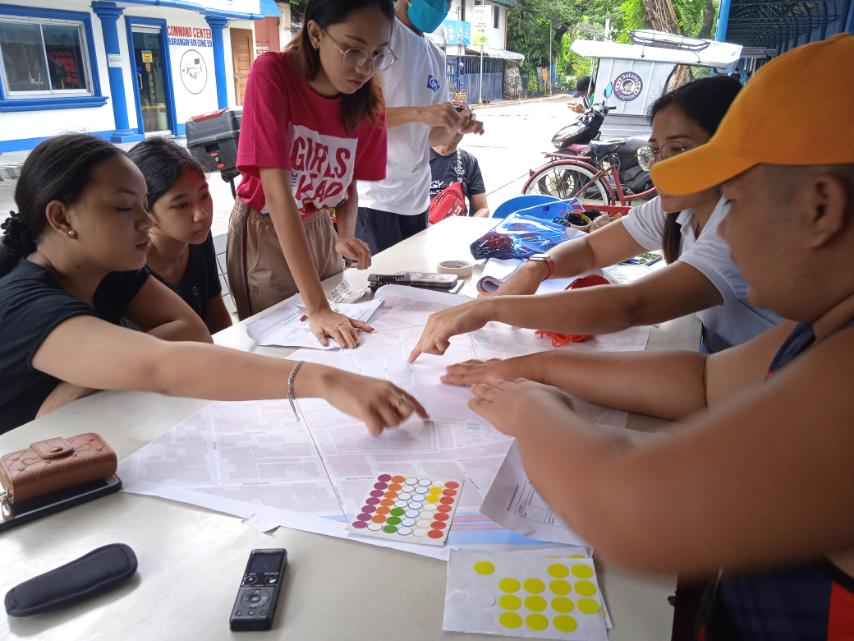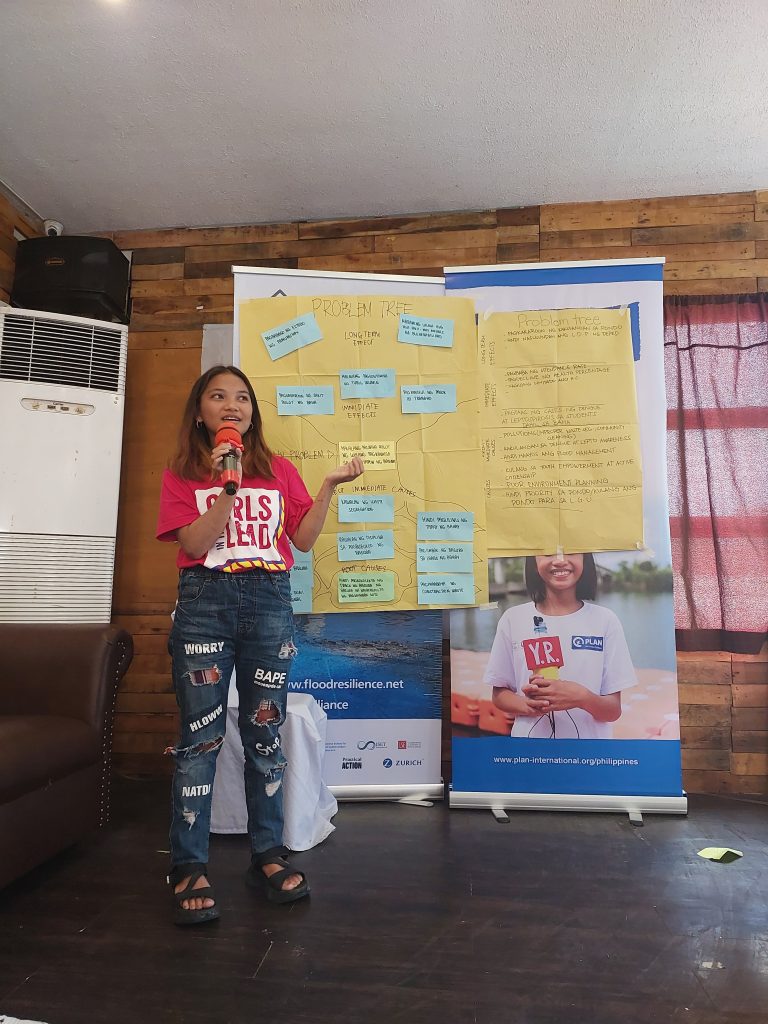In the Philippines, children and youth are often excluded from decision-making because they are not actively engaged by policymakers. Plan International, as a member of the Zurich Climate Resilience Alliance, works with young people (17-24 years) to give them a voice in decision-making. They are working in some of the highest risk barangays (communities) in the National Capital Region, with three barangays in Manila City and four barangays in Navotas City.
Most affected, but not included
Based on the findings of Plan’s baseline research conducted in the barangays, youth are at high risk from the impacts of natural hazards but, despite being exposed to regular flooding, they are some of the least included in their community planning activities, including evacuation planning for emergency situations. The baseline research was based on the Flood Resilience Measurement for Communities (FRMC) and included household surveys, group discussions with youth, and youth-centered risk assessments. The youth-centered risk assessments were conducted as part of the intervention to accompany young people on the journey to become more risk aware and resilient.
Through the FRMC, the project team identified:
- Limited risk awareness and lack of youth participation in decision-making processes as one of the key constrainers for inclusive flood resilience.
- Across the seven barangays, the FMRC tool unveiled low grades for social inclusiveness, community participation, and community disaster risk reduction and management (DRRM) planning.
- Insights from female respondents indicated lack of awareness about communal response plans, low to very low participation in planning and even non-existent plans.
- Group discussions with young people aged 17 to 24 demonstrated little to no knowledge about existing plans or participation in designing evacuation and response plans.
Youth in flood resilience
Aires Cavalida and Catherine Cane (both 19) joined the Flood Resilience Project in the Philippines and have been part of the Disaster Risk Reduction and Management (DRRM) orientation, community risk assessments, and risk mapping activities. Aires joined as a youth representative of the fishers from Brgy Tanza Uno of Navotas City while Catherine is a student from Brgy 601, Manila City.
Both girls and their families have experienced disruptions due to flooding – including being unable to attend school. They explained that they are usually passive receivers of actions or orders from adults and community leaders. According to Aires, this is the first time she has ever engaged in a DRRM project in her hometown. Community projects with Non-Governmental Organizations most of the time focus on parents or guardians, not young people. Catherine shared a similar experience, but added that the youth’s familiarity and better understanding of the internet and technology can sometimes be seen as their contribution to the community.

To address limited participation of young people in the DRRM planning process, the project team designed a youth-centred community-based disaster risk reduction training program focused on building the capacity to understand fundamental concepts in DRRM – such as the risk equation, building the skills to use these concepts for youth-led risk assessments, and then produce plans based on these. Concepts discussed include child’s rights and disasters, policies and laws supporting youth participation, and the ideas behind participatory risk assessments.
During the training program, Aires remained a committed participant because her own family feels the effects of the changing climate – floods are getting worse and becoming more unpredictable and their fishing practices are being negatively impacted. Catherine and her family are survivors of Typhoon Ketsana (2009) and she also shared that taking part in the activities is important to her. The training program enabled the youths to speak their mind about how to tackle community issues and then become part of the solution.
The activities were great because we were given the chance to learn about things that we usually do not notice. The training was of great help for us young people, especially since we are just starting to learn about having environmental advocacies so we can help in developing this barangay into a safe and peaceful place. Youth leaders need to be stronger; it is not only a requirement, but a responsibility to the community. Even without a position, there is a need to participate in addressing issues of the community and the country.
Aires Cavalida, participant of the training program

Aires’ and Catherine’s participation in the program resulted in their becoming primary mobilizers of fellow young people. Aires became a partner in ensuring that other participants also regularly attended and that those young people who are usually overlooked – like out-of-school youth – were also given the chance to join. Both girls even convinced younger family members to join!
Catherine was able to share her Flood Resilience Project experience during their community festival. She was a candidate for Binibining 601 (Miss 601), a local pageant, and during her participation she shared what she learned from the DRRM training and the advocacy workshop. She was able to mobilize six other contestants to join the risk assessments and training, too.
Turning knowledge into action
After the learning sessions on the impacts of natural hazards and the conduct of risk assessments, the Flood Resilience Project looks to use the output of the assessments as tools to develop:
- Family preparedness plans,
- Youth-led small-scale flood mitigation projects,
- Lobby activities urging the local government to commit to inclusive and risk informed flood risk planning.
Plan International is looking to further our partnership with these girls and other young people in communities as we develop, implement, and improve their youth led DRRM plans and projects. You can find out more about our work in the Philippines here.

Comments